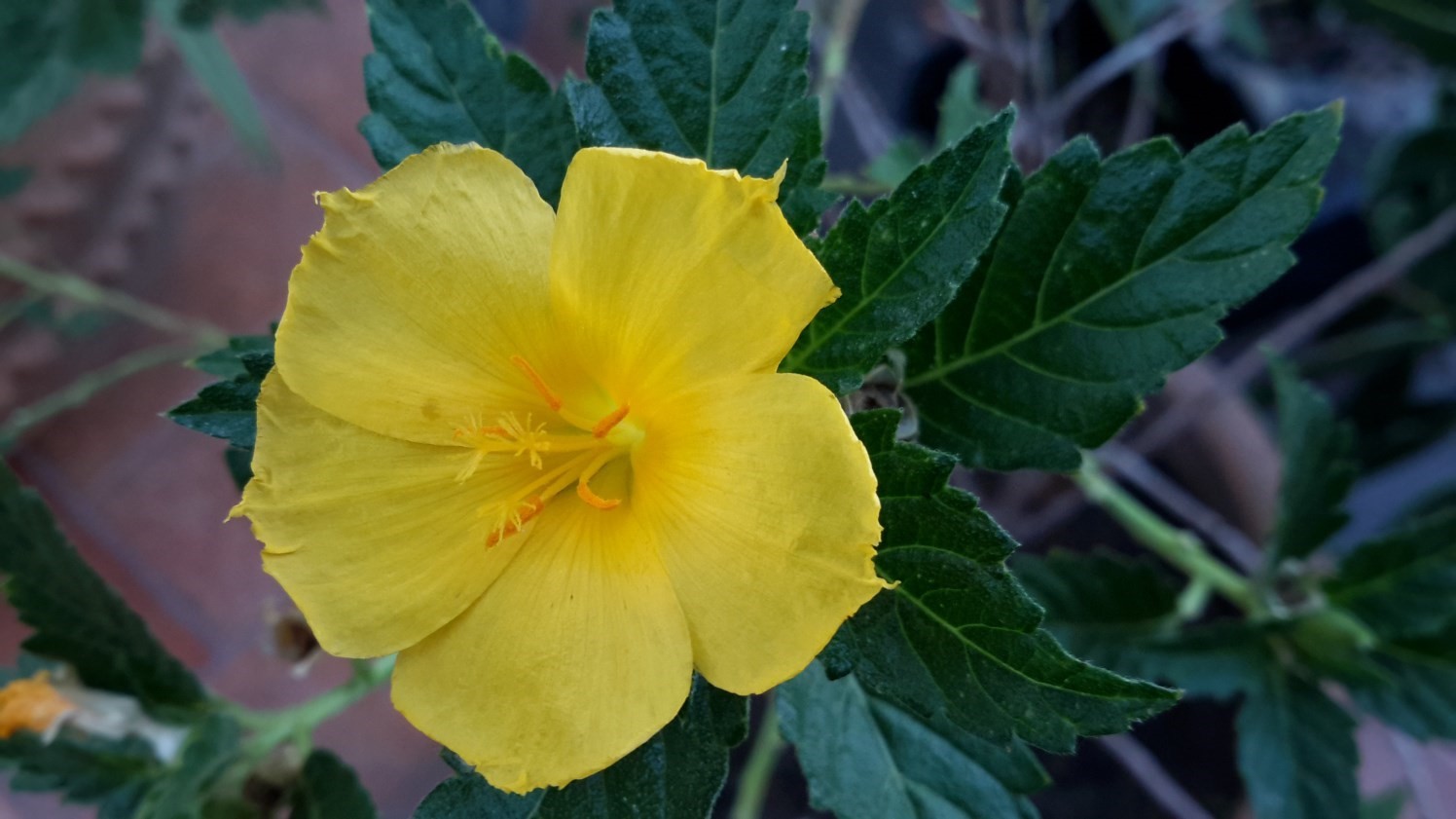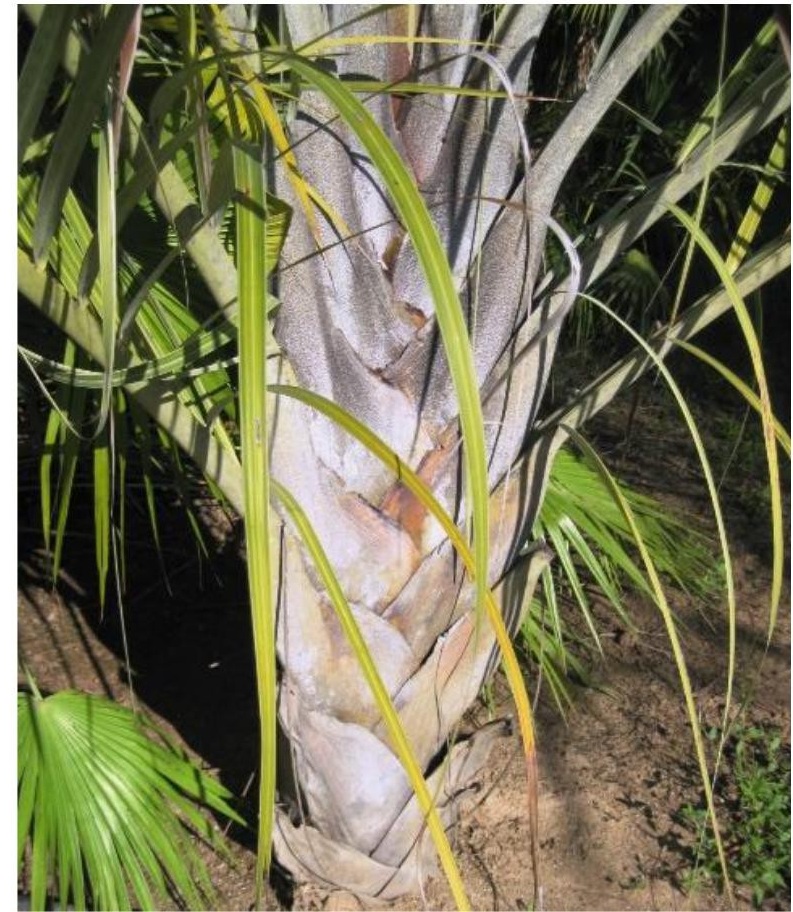By Tommy Clarkson on the February 2021 Edition
Mexican Heather Cuphea hyssopifolia
 Family Lythraceae
Family Lythraceae
Also known as False Heather, Mexican False Heather, Hawaiian Heather, Artificial Heather, Elfin Plant, Elfin Shrub, Elfin Herb, Clammy Cuphea or Corail
For whatever reason – other than it does sorta’ resemble it at first glance – I always think of the alfalfa fields of my Kansas youth when I come upon False Heather. (Related thereto, if there is any way possible, I strongly encourage that you find whatever possible reason to avoid stacking bales of hay – made from alfalfa – high up in a breezeless barn loft in the heat of a Midwest August!)
However, whereas it (Medicago sativa) is a herbaceous perennial and the foremost forage legume in the United States, our subject plant (Cuphea hyssopifolia) is a plant life form of an altogether different nature and use. In that category of plants that this is not, it also isn’t in the Heather family, Ericacaea.
My – all too often circuitous, rambling thought process not withstanding, according to the folks at the Missouri Botanical Garden (a pretty savvy lot, I must say) its “genus name comes from the Greek word kyphos meaning curved or humped in probable reference to the shape of its seed capsules.” The species epithet hyssopifolia refers to the shape of the leaves which are like those of the herb Hyssop.
 Of the genus Cuphea, there are more than 250 various species and as may be suspected from the name of these, this perennial originated in Mexico and Guatemala. Besides this species, there are three others that gardeners have come to appreciate: Tropical Waxweed (Cuphea aspera), Columbian Waxweed (Cuphea carthagenensis) and Stiffhair Waxweed (Cuphea strigu-losa). (Yes, this may be on the test!)
Of the genus Cuphea, there are more than 250 various species and as may be suspected from the name of these, this perennial originated in Mexico and Guatemala. Besides this species, there are three others that gardeners have come to appreciate: Tropical Waxweed (Cuphea aspera), Columbian Waxweed (Cuphea carthagenensis) and Stiffhair Waxweed (Cuphea strigu-losa). (Yes, this may be on the test!)
From a pure and simple, plant recognition point, Mexican Heather is a compact, bushy, evergreen shrub, growing from a bit below eighteen to over twenty-seven and a half inches (45-70 cm) in height and two to three feet (60.96-91.44 cm) wide.
While, from a distance, appearing to look somewhat similar to the (earlier alluded to) alfalfa leaves and blooms, they are actually small, lance-shaped, a bit leathery and dark green. Appearances can be deceiving.
While it looks rather delicate, it is, in fact, fairly sturdy. It re-quires very little maintenance thus making it a great option for first time gardeners.
Borne in horizontal sprays, they give a fine-textured appearance. From out of these are small clusters of light purple, pink, red or white flowers of only .39 of an inch (1 cm) across. (Actually, the False White Heather is the cultivar, Cuphea hyssopifolia ‘Alba’. (And yes, all of them attract hummingbirds, bees and butterflies.) Atop a rather compact bus, these profuse, continuously blooming flowers lend it effective employment as an edging or container plant as well as used in pots or baskets.
 The berry like fruit capsules of Mexican Heather are dehiscent (this means it will split along a built-in line of weakness in a plant structure so as to release its contents) and leathery, oblong-ovoid, up to .14 of an inch (3.5 mm) long, containing numerous reddish-brown seeds up to one to one and a half mm in diameter…and that is probably way more than you ever sought to know about them!
The berry like fruit capsules of Mexican Heather are dehiscent (this means it will split along a built-in line of weakness in a plant structure so as to release its contents) and leathery, oblong-ovoid, up to .14 of an inch (3.5 mm) long, containing numerous reddish-brown seeds up to one to one and a half mm in diameter…and that is probably way more than you ever sought to know about them!
If you decide to grow your Mexican Heather from a seed, they should start germinating in one to two weeks. Let the seedlings grow for about six to eight weeks before transplanting them. If your plant is containerized outside, and you wish to move it inside, place it in shade for two weeks before moving it in-doors.
As to its drinking preferences, though from Mexico, it seeks not tequila! Simply water when the soil surface feels dry to the touch. It wants to be in well-draining, sandy/loamy soil in either full sun or partial shade – though too much of the former could bleach its foliage. Food? Fertilize it with a balanced, water soluble fertilizer (10-10-10) every four months. It can be propagated either by seed or by taking smaller pieces from young stems and rooting them in moist soil.
While, generally, dense and compact, they occasionally might look a bit rangy. If so, cut it back by a third of its height which will encourage tighter growth. It is best propagated by soft-wood cuttings. They are also a bit susceptible to spider mites and flea beetles and could be badly trodden down by marauding, rogue elephant herds, should that be a problem in your area!
For many, Mexican heather is excellent landscape consideration!
—
Tommy Clarkson is a bit of a renaissance man. He’s lived and worked in locales as disparate as the 1.2 square mile island of Kwajalein to war-torn Iraq, from aboard he and Patty’s boat berthed out of Sea Bright, NJ to Thailand, Germany, Hawaii and Viet Nam; He’s taught classes and courses on creative writing and mass communications from the elementary grades to graduate level; He’s spoken to a wide array of meetings, conferences and assemblages on topics as varied as Buddhism, strategic marketing and tropical plants; In the latter category he and Patty’s recently book, “The Civilized Jungle” – written for the lay gardener – has been heralded as “the best tropical plant book in the last ten years”; And, according to Trip Advisor, their spectacular tropical creation – Ola Brisa Gardens – is the “Number One Tour destination in Manzanillo”.



